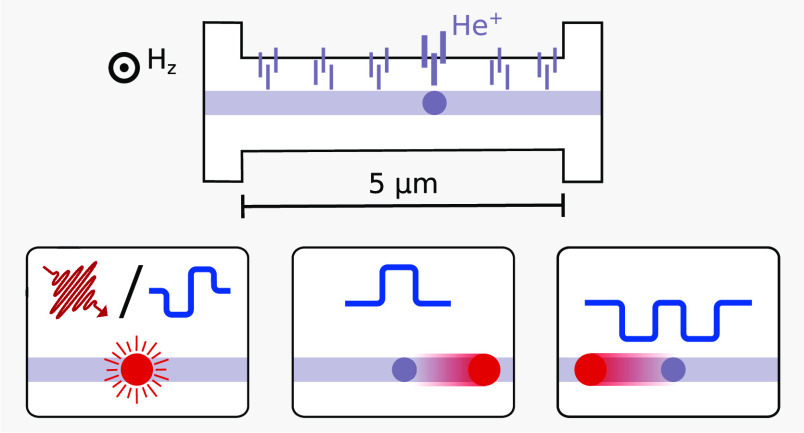- Record: found
- Abstract: found
- Article: found
Deterministic Generation and Guided Motion of Magnetic Skyrmions by Focused He +-Ion Irradiation

Read this article at
Abstract

Magnetic skyrmions are quasiparticles with nontrivial topology, envisioned to play a key role in next-generation data technology while simultaneously attracting fundamental research interest due to their emerging topological charge. In chiral magnetic multilayers, current-generated spin–orbit torques or ultrafast laser excitation can be used to nucleate isolated skyrmions on a picosecond time scale. Both methods, however, produce randomly arranged skyrmions, which inherently limits the precision on the location at which the skyrmions are nucleated. Here, we show that nanopatterning of the anisotropy landscape with a He +-ion beam creates well-defined skyrmion nucleation sites, thereby transforming the skyrmion localization into a deterministic process. This approach allows control of individual skyrmion nucleation as well as guided skyrmion motion with nanometer-scale precision, which is pivotal for both future fundamental studies of skyrmion dynamics and applications.
Related collections
Most cited references54
- Record: found
- Abstract: not found
- Article: not found
Skyrmions on the track.
- Record: found
- Abstract: found
- Article: not found
Writing and deleting single magnetic skyrmions.
- Record: found
- Abstract: found
- Article: not found